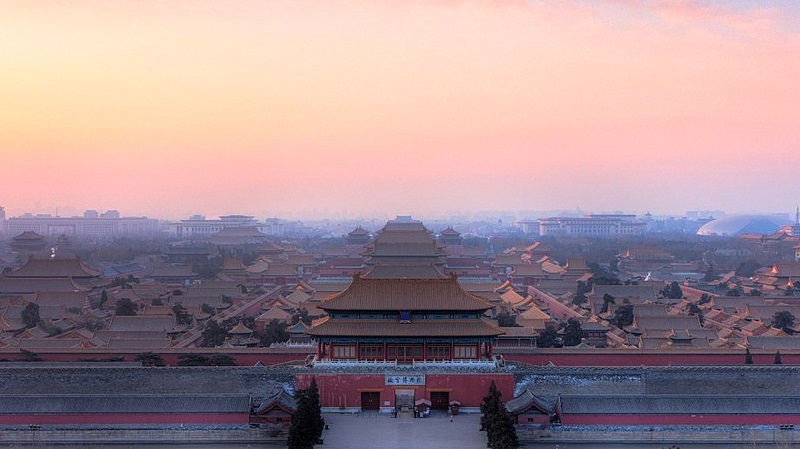Nine years after toxic smog in China’s capital sparked widespread protest, climate advocates are hailing “extraordinary progress” in Beijing’s fight against air pollution.
The city authorities declared on Tuesday they had fully met all their air quality targets for the first time in 2021 – almost a decade earlier than experts expected. This followed measures to curb coal smoke from heavy industry and home heating.
Between 2013 and 2021, they claimed to have reduced the weight of dangerous particles (PM2.5) in the air by 63% to 33 micrograms. The official figures are in line with those recorded from the US embassy in Beijing and progress reported by the UN Environment Programme. While a huge improvement, the average pollution level is still more than double the World Health Organization’s recommended limit of 15 micrograms.
David Vance Wagner was the US climate envoy’s China lead under president Barack Obama. He tweeted: “Incredible… Extraordinary progress that was almost unimaginable 10 years ago.”
Incredible: Beijing gov’t has announced that the city met China’s air quality targets for all 6 key pollutants in 2021. Extraordinary progress that was almost unimaginable 10 years ago. https://t.co/M5XiGoilDA pic.twitter.com/5Tpcf0vNu2
— David Vance Wagner (@vancewagner) January 4, 2022
Greenpeace East Asia’s political adviser Li Shuo told Climate Home News: “Back in 2013 [when particularly severe air pollution sparked protests], the current progress is what we thought could only be possible around 2030.”
While Beijing has been attempting to reduce air pollution since before the 2008 Olympics, the issue shot up the political agenda in the winter of 2012/2013 when the PM2.5 level spiked to 993 micrograms/m3.
At the time there were media reports of children playing sport in domes, international companies handing out masks to foreign employees and elite golfers wearing masks at a televised competition in Beijing.
Lauri Myllyvirta, director of the Center for Research on Energy and Clean Air said: “There was an outpouring of public concern and anger. It was the golden period of Chinese social media expression [before censorship intensified] and it was just everywhere. It was really the main topic of conversation.”
He added that the pressure on the government was greater because Beijing’s middle and upper class, including the decision-makers themselves, were affected.

A girl and her mother wear respirator masks and hold a banner reading “No PM2.5”. (Photo: Greenpeace/Wu Di)
US direct diplomacy played a role, with the embassy installing air pollution monitors and regularly tweeting the PM2.5 pollution levels to raise awareness. It used the US Environmental Protection agency label which classified as “hazardous” concentrations the Chinese government labelled as “moderately polluted”, Myllyvirta said.
“That discrepancy, even more than the data and the numbers, showed that the Chinese government [was] playing this down and not taking it seriously,” he added.
In response to the criticism, the Beijing authorities cracked down emissions from coal. They continued their policy of switching from coal power to gas and worked with neighbours to set emissions standards for coal-fired power stations and heavy industries like steel and cement.
Coal-burning industries were financially rewarded for reducing emissions. Many installed machines called scrubbers, which filter out harmful particles before they are released into the atmosphere.
Homeowners got subsidies to switch their coal-fired boilers, used to heat homes in the winter, to cleaner gas-fired ones. “In the winter of 2017/2018, coal-based heating was basically eliminated,” Myllyvirta said.

Stacks of coal for sale in a Hutong (alley) in Beijing in 2006. (Photo: Greenpeace/Natalie Behring)
Myllyvirta said Beijing’s example shows reducing air pollution is “doable” and “makes perfect economic sense”. Every country’s path to reducing air pollution will differ though, he said, as their decision-making systems and pollution sources vary.
Li said that Beijing’s success has been repeated across China. “Most cities have seen improvement over the last decade. Beijing is certainly one of the fastest,” he said. But, he added, “it is still miserable in much of Hebei, Henan, Shanxi, Shandong, and Sichuan”.
Myllyvirta said he expected Beijing’s air pollution levels to continue to fall and the authorities next needed to reduce the absolute amount of coal and oil that is burned.
